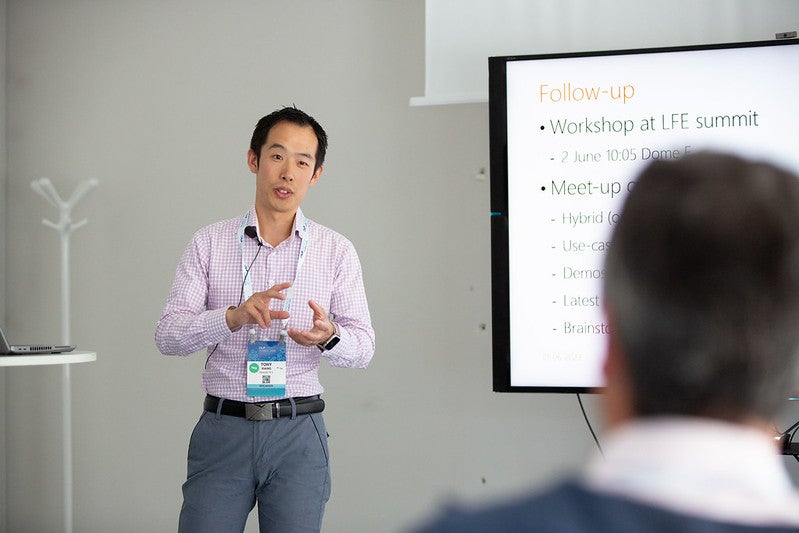LF Energy Summit 2023 Recap: Unveiling the Power Grid Model: Transforming Grid Calculation with High-Performance Efficiency
In a session at LF Energy Summit 2023, Tony Xiang of Alliander took the virtual stage to unveil an innovative solution that is set to revolutionize grid calculations. Titled “Power Grid Model: A High-Performance Distribution Grid Calculation Library,” the session shed light on a groundbreaking open-source project that promises to reshape the landscape of grid modeling and analysis (video follows below).
Introduction to the Power Grid Model
Xiang opened the session by introducing the audience to the Power Grid Model, an open source initiative that has recently joined the LF Energy community. Alliander, a prominent Dutch distribution grid operator, identified a pressing need for a new grid calculation approach, leading to the inception of this project.
Why a New Approach?
The first key point of the presentation centered around the motivation behind creating the Power Grid Model. Xiang highlighted that while there are existing grid calculation projects in the market, Power Grid Model aims to stand out due to its unique features and advantages. With the rapid changes and variations anticipated in the energy landscape, the model was conceived to handle complex calculations efficiently.
Defining the Power Grid Model
Xiang delved into the specifics of the Power Grid Model, describing it as a high-performance distribution grid calculation library. He emphasized that the model not only met the performance requirements but also provided a robust and easily accessible software API. The presentation highlighted the importance of parallelization, which is a critical aspect of the model’s design to ensure scalability for diverse scenarios.
Application within Alliander’s Operations
One of the highlights of the session was the real-world application of the Power Grid Model within Alliander’s operations. Xiang shared insights into the model’s deployment in the context of Alliander’s vast distribution grid network across the Netherlands. With over 90,000 kilometers of electrical cables, 40,000 kilometers of gas pipes, and almost 6 million customers, the model demonstrated its ability to handle complex calculations on a large scale.
Road to Open Source and Collaboration
The journey of the Power Grid Model into the open source community was another key aspect discussed during the presentation. Xiang elaborated on how the model became a part of the Linux Foundation Energy, emphasizing the benefits of collaboration with other utilities, research institutions, and developers. He highlighted that the model’s status as an open-source project allows for ongoing improvement, wider adoption, and contributions from a diverse set of stakeholders.
The presentation wrapped up with a glimpse into the future of grid calculation. Power Grid Model aims to not only serve the needs of Alliander but also provide a powerful tool for the broader energy industry. With its emphasis on performance, cross-platform compatibility, and community-driven development, the model is poised to play a crucial role in shaping the efficiency and reliability of grid calculations in the years to come.
